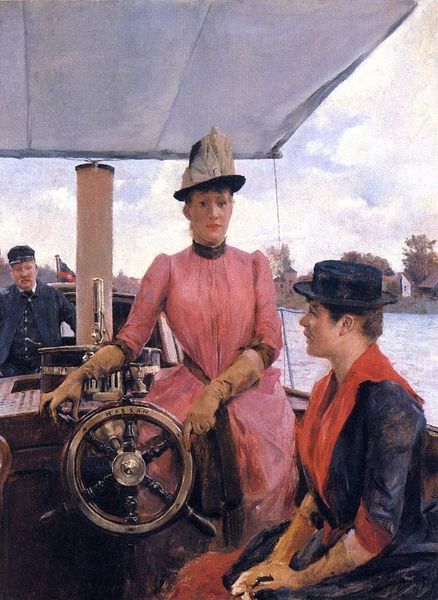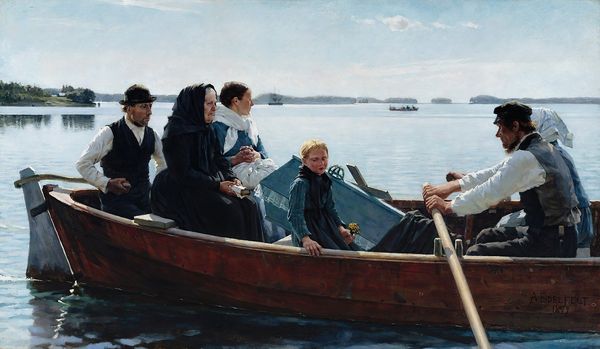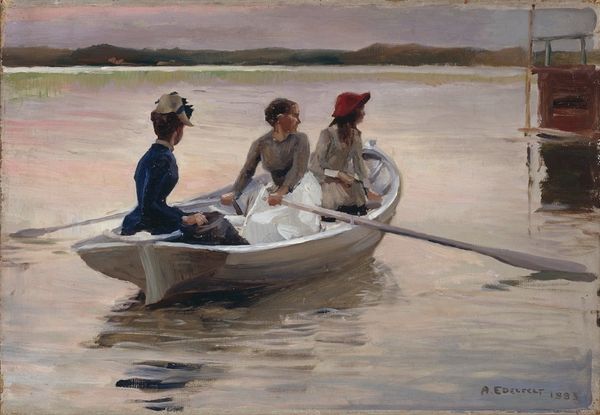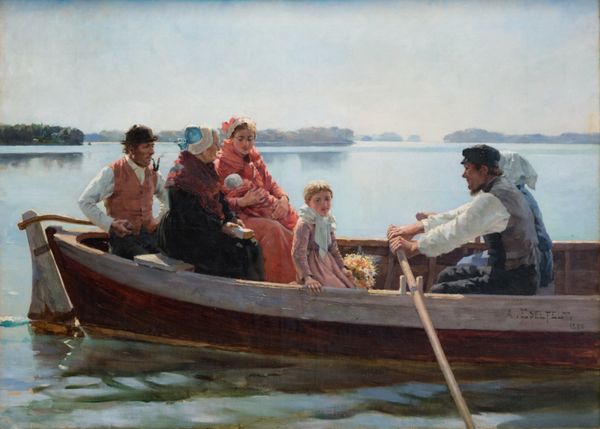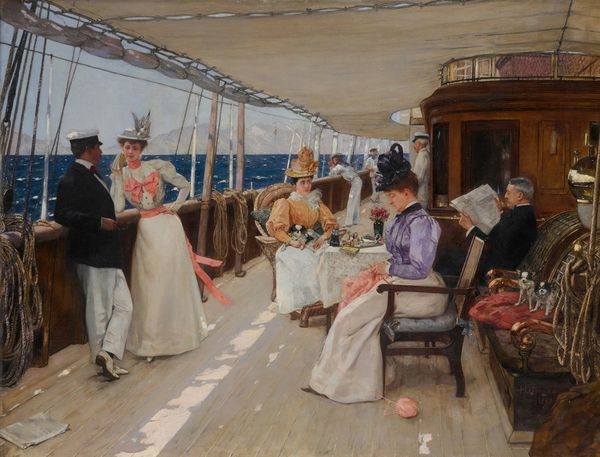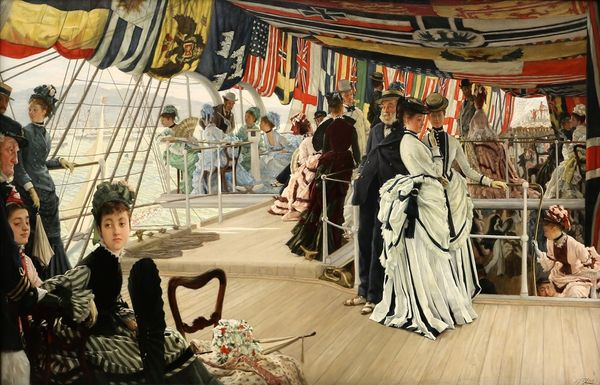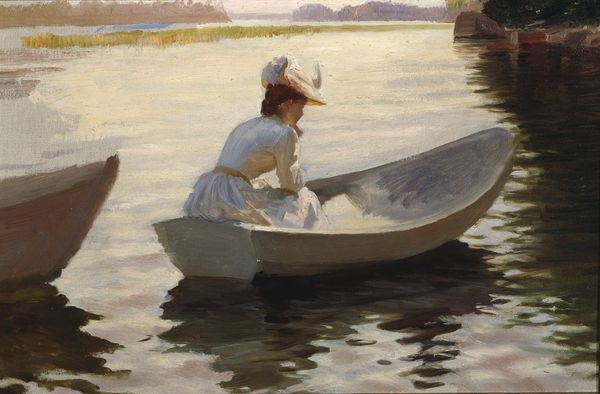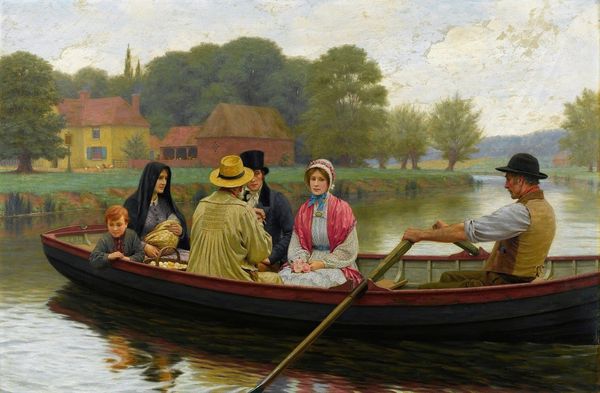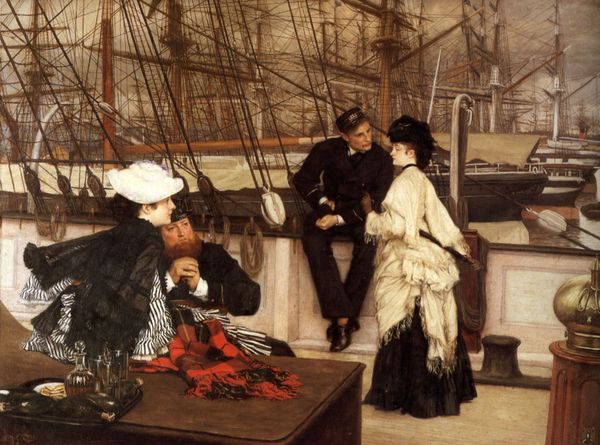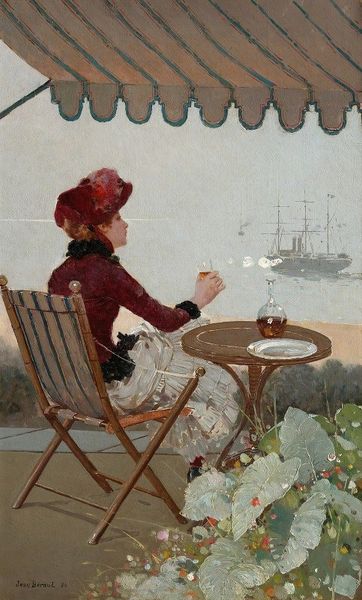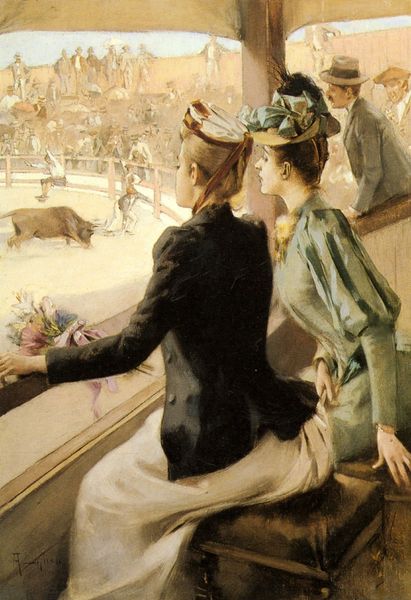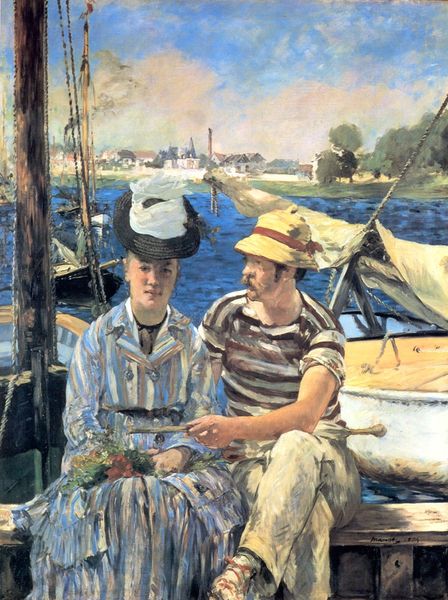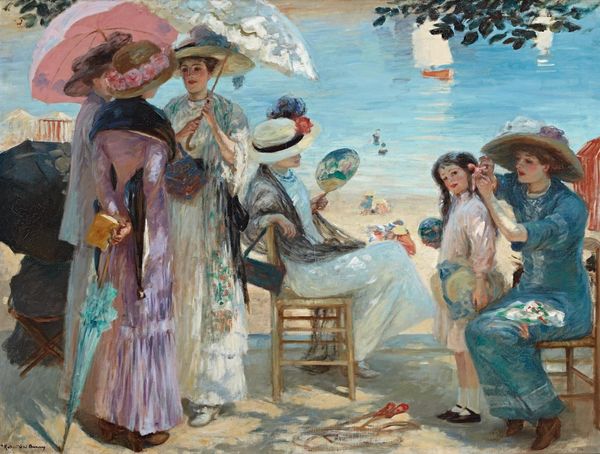
plein-air, oil-paint
#
portrait
#
figurative
#
impressionism
#
plein-air
#
oil-paint
#
oil painting
#
cityscape
#
genre-painting
Copyright: Public Domain: Artvee
Editor: This is "Full Speed," painted in 1886 by Julius Leblanc Stewart. It's an oil painting that seems to capture a leisurely boat ride. The composition, with these figures on a boat, feels so deliberately staged, almost performative. What’s your take on the narrative or the social context of this piece? Curator: That's a keen observation about the staged quality. Think about the late 19th century, the rise of the bourgeoisie, and the performance of leisure. These figures aren’t just boating; they're showcasing their status. How does Stewart use light and color to convey this social dynamic? Editor: I see it in the clothing and the way they're positioned, almost like a portrait against a moving backdrop. The soft brushstrokes and plein-air style add a sense of immediacy. Does the setting – the river, the open air – play a significant role? Curator: Absolutely. The river, especially for Parisians, became a public space for demonstrating social standing. It allowed the wealthy to be seen, admired, and even envied. Notice how Stewart contrasts the relaxed poses with the implied motion of the boat. What could that signify? Editor: Perhaps a deliberate effort to showcase composure and control amid a changing world, or is it commentary of industrial movement? Curator: Exactly! It mirrors the larger societal shifts of the era. The industrial revolution brought about new wealth, but also anxiety about class and status. These figures are literally "full speed" ahead, embracing modernity, but doing so in a way that maintains their social hierarchy. The boat, then, is a kind of stage upon which these social dramas play out. What strikes you most about the public role of art based on the discussions? Editor: I guess I hadn't thought about leisure as a performance before! Seeing art through this historical lens really brings out the socio-political layers. Curator: And seeing those layers helps us understand not just the art, but the world in which it was created. It invites us to reflect on how those dynamics still resonate today.
Comments
No comments
Be the first to comment and join the conversation on the ultimate creative platform.
